MXA RACE TEST: 2017 YAMAHA YZ250F — TRADING PLACES
Click on images to enlarge
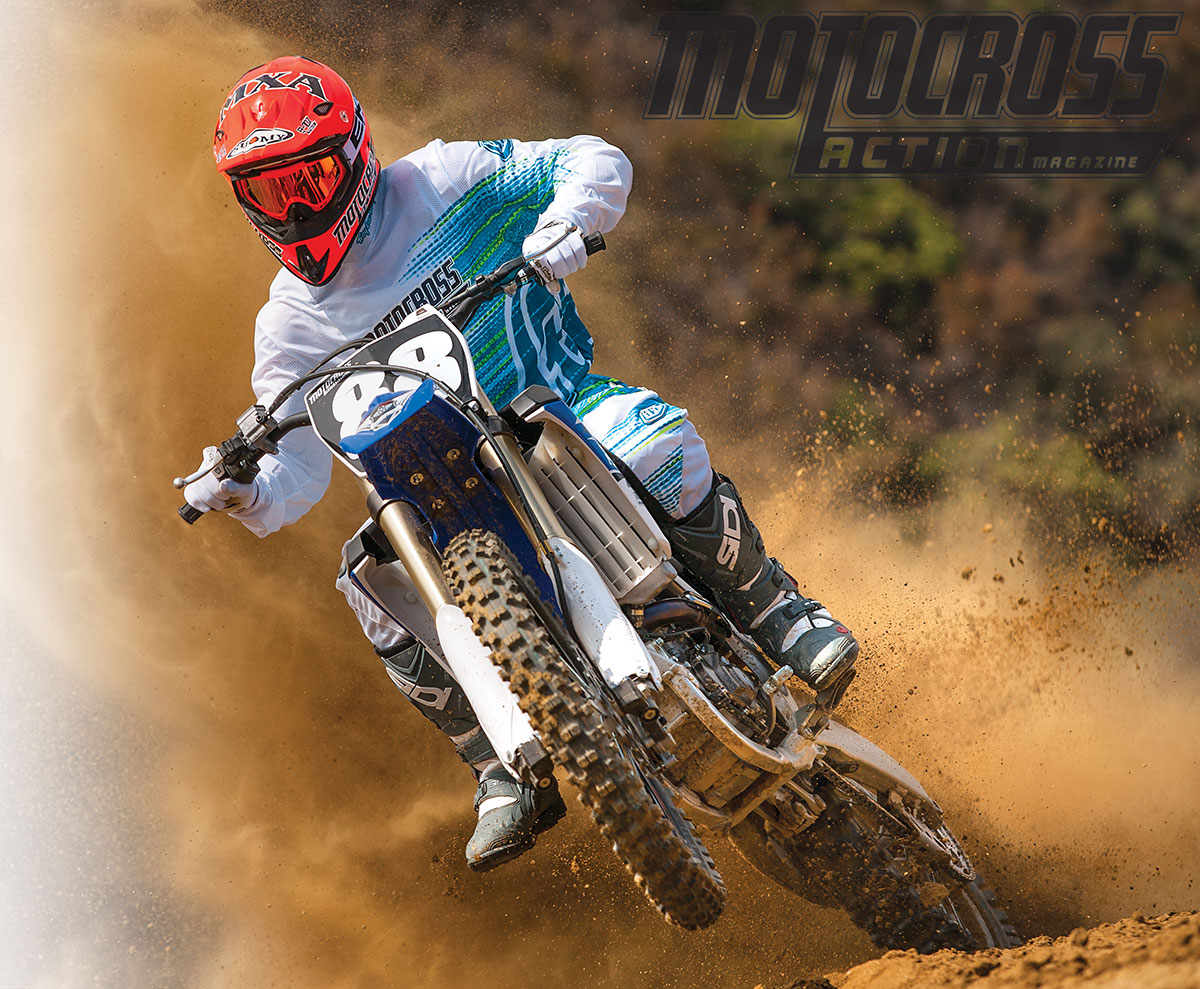
Q: FIRST AND FOREMOST, IS THE 2017 YAMAHA YZ250F BETTER THAN THE 2016 YZ250F?
A: Yes, in some ways. But, it is quite a bit different in the power department. Last year the only performance upgrade that Yamaha made to the 2016 YZ250F was the oversized 270mm front rotor. Oh, don’t get us wrong; Yamaha made modifications between 2015 and 2016, but virtually every one of them was for durability, not performance. Yamaha has suffered a few high-profile mechanical issues in recent years with the water-pump shaft, shift-stopper roller and connecting rod. Thus, Yamaha’s 2016 focus was on beefing up the running gear instead of hopping up the engine, which might have increased the failure rate. Thus, Yamaha took a breather in 2016 to up the bike’s structural integrity. We think it was a good call by Yamaha.
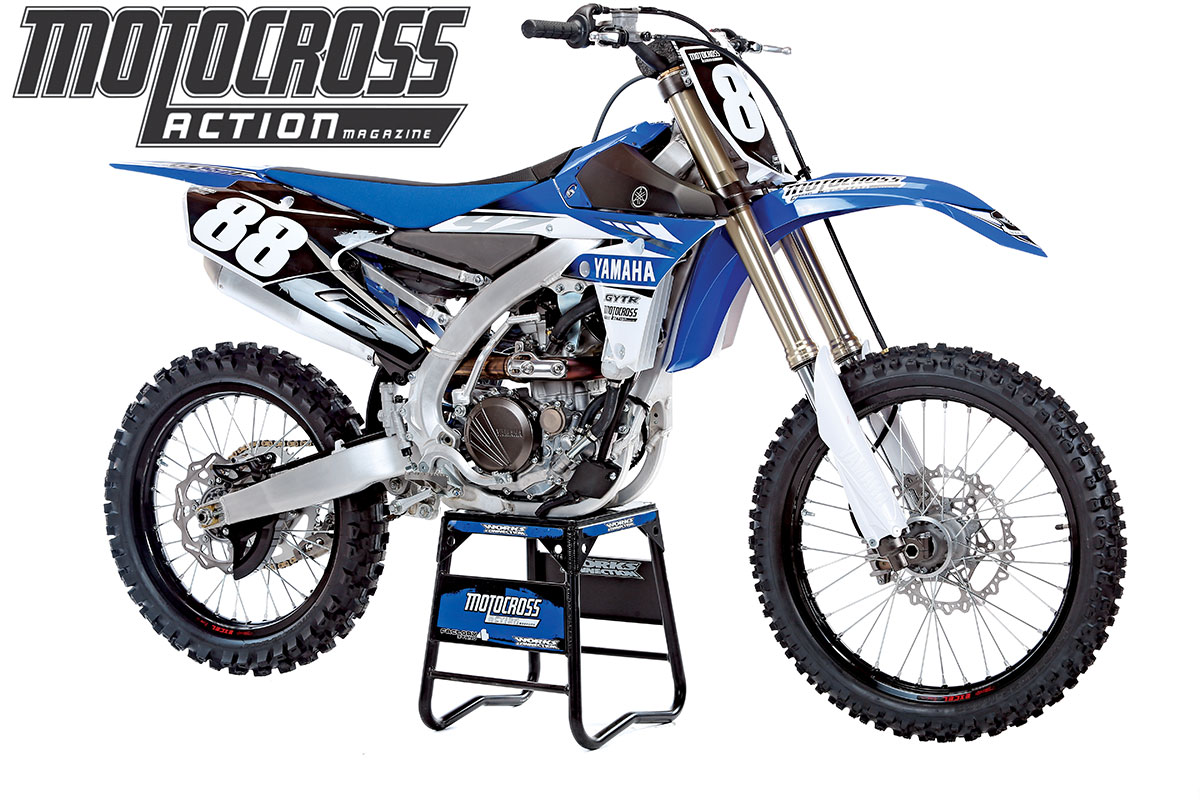
Q: HOW MANY 2017 YAMAHA YZ250F MODS WERE FOCUSED ON FIXING FLAWS?
A: Even though last year’s upgrades were all aimed at durability, that didn’t stop Yamaha’s engineers from pulling out their handyman aprons for 2017 and continuing to knock off items on the YZ250F’s to-do list. (1) On the durability front, the 2017 YZ250F gets stronger heat-treated engine cases. (2) The transmission output shaft has been made thicker (with added oiling holes). Inside the gearbox, second and third gears have been beefed up from 1.0 to 1.2mm, while the dog radius has been widened to make engagement more accurate. (3) The connecting rod gets a wider profile (approximately 10 percent wider in cross-sections), along with high-end, nickel-chromium-molybdenum steel being used instead of weaker chromium-molybdenum steel. (4) Even the shift lever has been altered after Yamaha’s engineers noticed that shift-lever flex was slowing down gear changes. The final durability change was a new metal composition for the rear brake rotor (after 2016, rotors suffered some warpage issues under hard use).
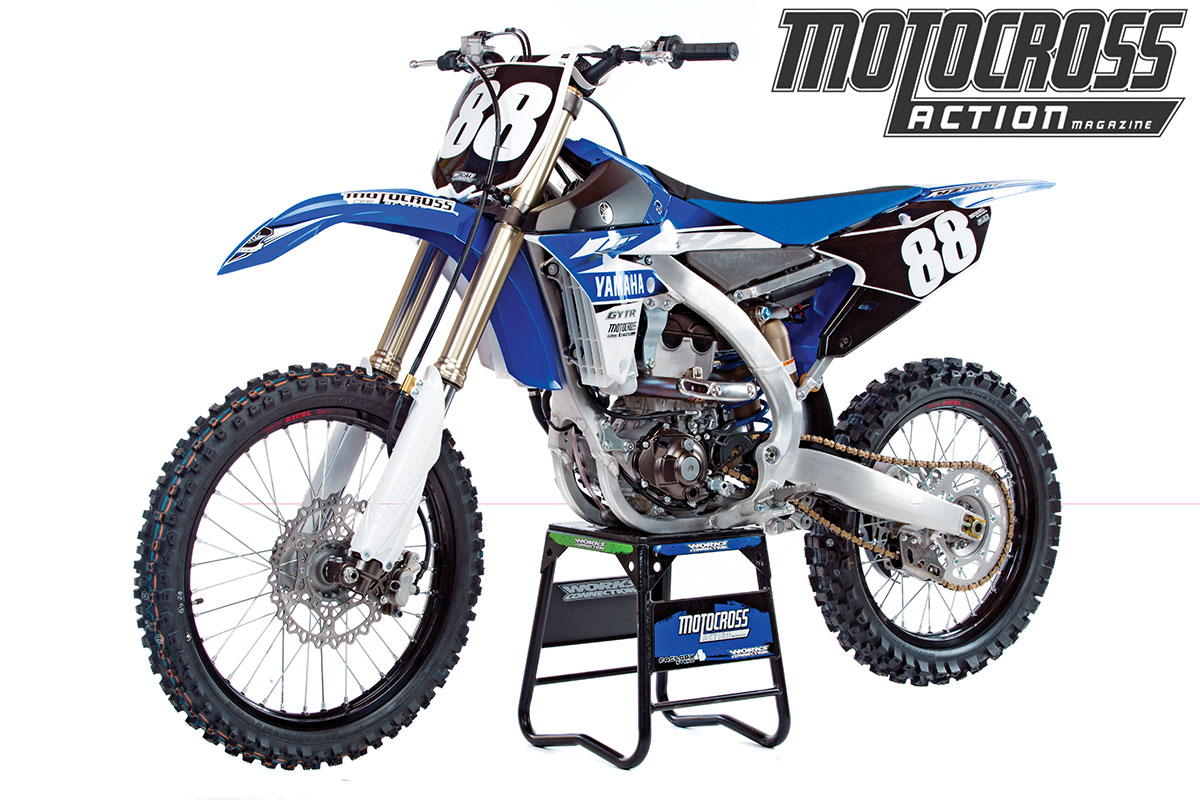
Q: WHAT WERE THE PERFORMANCE MODS ON THE 2017 YAMAHA YZ250F ENGINE?
A: For 2017 the Yamaha YZ250F received a significant number of hop-ups, not just to the engine, but to the chassis, running gear, suspension and accoutrements. Yamaha’s engineers felt compelled to up the power output of the YZ250F engine, because even though the bike had won every 2015 and 2016 250 four-stroke shootout, it hadn’t done it on horsepower. It wasn’t the most powerful 250 on the track; it wasn’t even the second most powerful. It was fourth in the pony parade after Husqvarna and KTM (and just a hair behind Kawasaki on peak horsepower). And, the margin between the class-leading orange and white bikes and the blue one was almost 4 horsepower. Power production is important, but the 2016 YZ250F proved that power placement can trump mega numbers. Still, Yamaha’s engineers knew that they had to keep KTM’s big horsepower numbers in sight to stay on top.
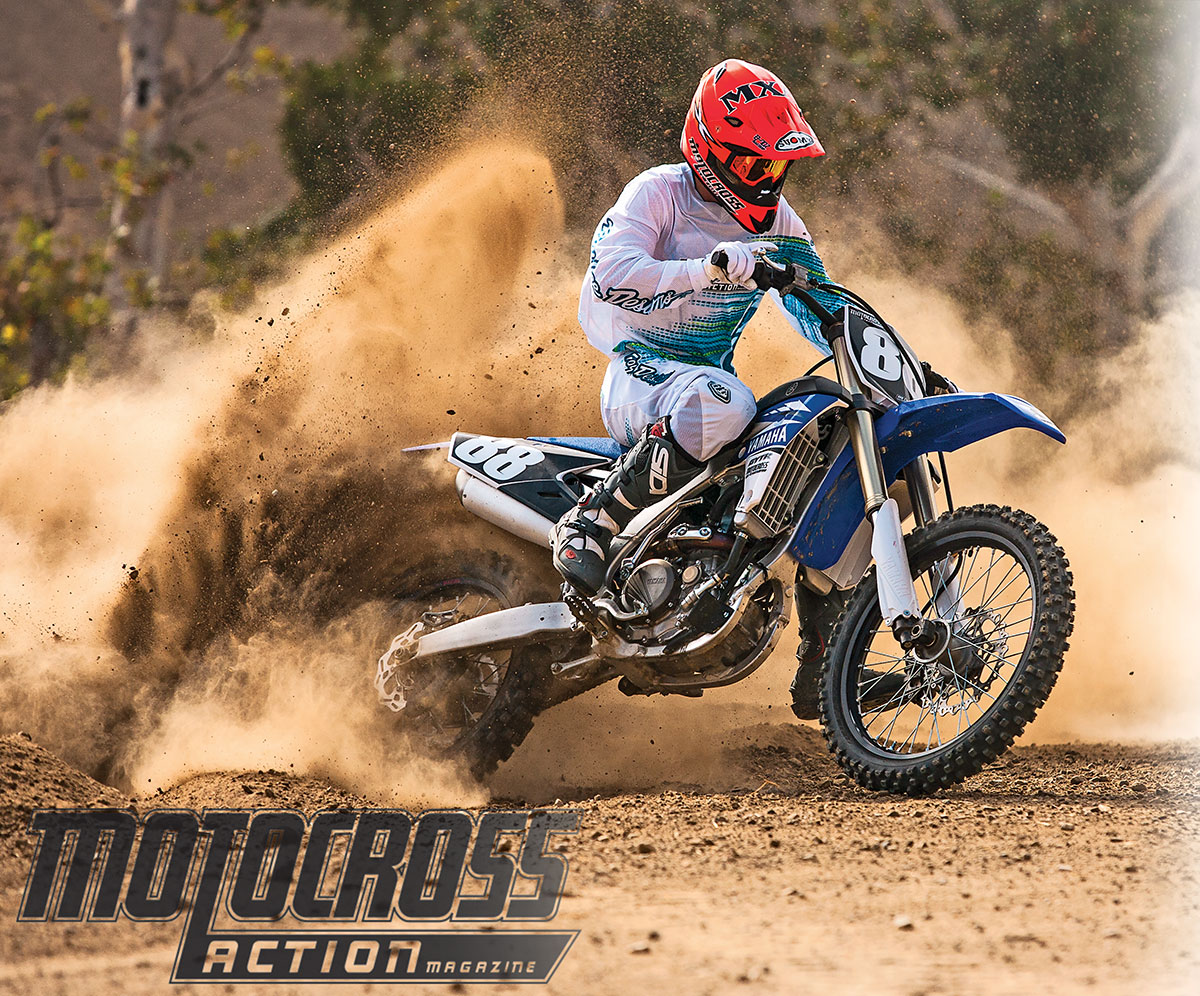
So, Yamaha made six major engine changes for 2017. Why? Fear. Yamaha was motivated to hop-up the 2017 engine out of fear that the Austrians would kick out the jams again and send the YZ250F spiraling from the top of the heap. Here is a quick list of what’s new on the 2017 Yamaha YZ250F.
(1) Cylinder head. The 2017 cylinder head is not a ported 2016 head. It is a totally new casting that has been designed to get more fuel into the combustion chamber at a swifter “acceleration rate.” The key element of the new head is straighter intake tracts feeding the intake valves. To achieve this, Yamaha raised the intake port by 4mm, eliminated the intake bridge, magnified the Bernoulli effect of the intake port’s shape and sloped the area around the valve seat by 0.4mm to enhance flow.
(2) Air boot. The rubber air boot’s velocity stack is shortened by 15mm, while the rubber manifold that joins the Keihin throttle body to the cylinder head has been increased in volume by 4.6 percent. Interestingly, Yamaha didn’t use a 100-percent rubber manifold. Instead, half of it is made from aluminum. Why? The aluminum can absorb more heat from the cylinder head than rubber, and this heat aids in atomizing the fuel being misted out of the throttle body’s injector.
(3) Camshaft. The intake cam has its lift increased by 0.1mm. Additionally, the profile of the lobes has been changed by –8 degrees so that the valves open quicker but for a shorter duration. The exhaust cam has 0.5mm more lift for better fuel evacuation at high rpm. Of course, the added lift requires stiffer valve springs.
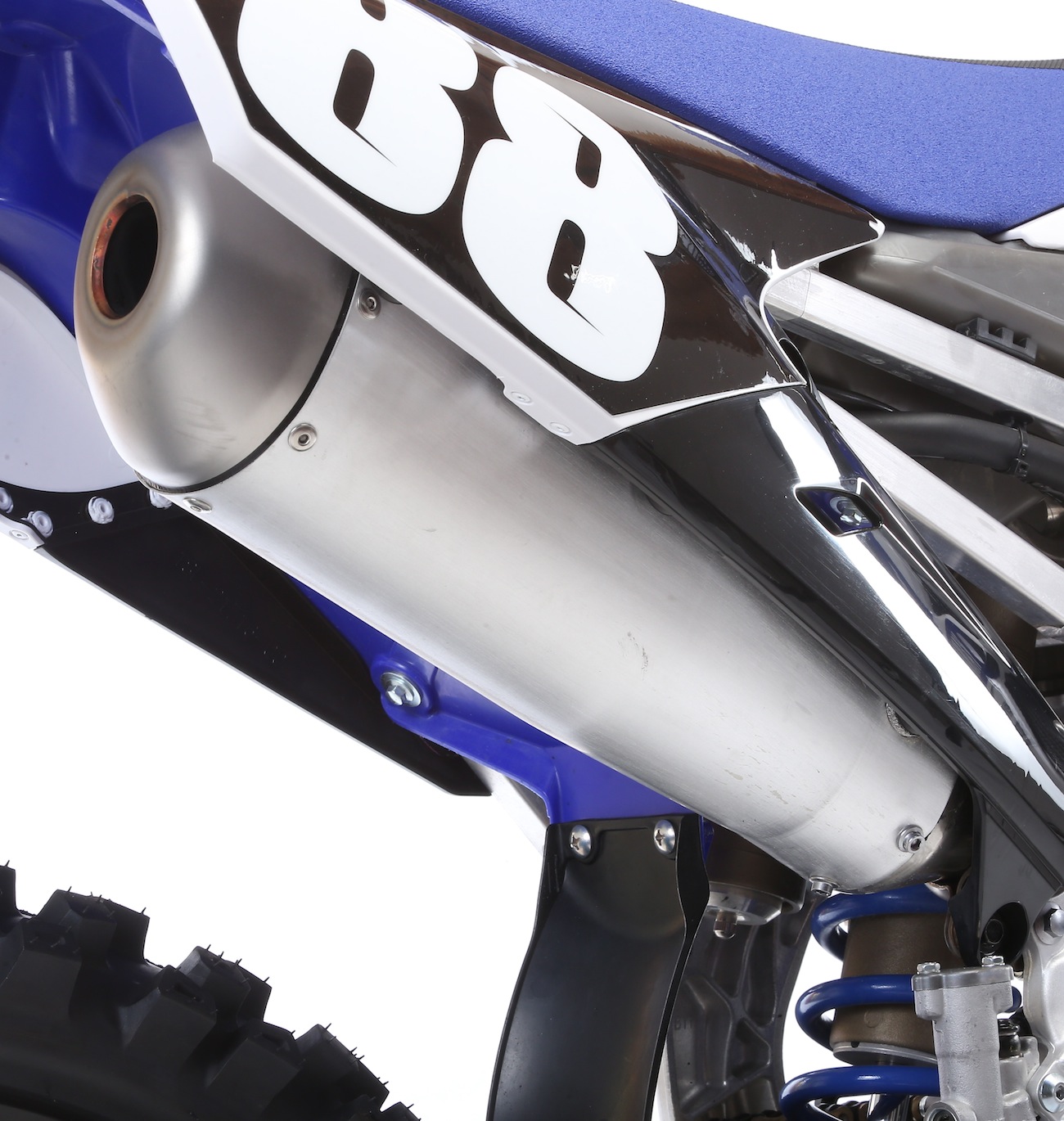 In a word, loud. The 2017 Yamaha YZ250F blares at you from both ends. The airbox makes a racket that is matched by the muffler.
In a word, loud. The 2017 Yamaha YZ250F blares at you from both ends. The airbox makes a racket that is matched by the muffler.
(4) Exhaust pipe. The head-pipe-diameter choice is based on a simple formula. The larger the diameter of the head pipe, the greater the top-end power (the smaller, the better the low-end response). For 2017 Yamaha increased the tubing diameter by 2.8mm as it exits the exhaust port (from 36.5mm to 39.3mm) and by 2.3mm (from 40.7mm to 43.0mm) where it enters the mid-pipe. This is not a tapered head pipe but a stepped head pipe. Additionally, the curves of the head pipe have been made less pronounced by increasing the radius by 10mm—you can tell by how far the head pipe sticks out.
(5) Clutch. By shortening the clutch-actuation arm (where the cable connects) 3mm, straightening the cable interface at the bracket and changing the cam ratio from 4.18mm to 3.98mm, Yamaha’s engineers were able to get the clutch plates to disengage with wider spacing between the plates. More room between the plates lessens clutch drag, slippage and wear.
(6) Rev limiter. Yamaha changed the rev limiter’s cutout so that it kicks in later in the rpm range, and the kill-switch-like pulses are spaced closer together. You may remember that Yamaha did the exact same thing last year, but for 2017 they have moved the initiation point higher up in the rpm range. The 2017 rev limiter turns off the engine at 14,000 rpm.
Q: WHAT CHANGES DID YAMAHA MAKE TO THE 2017 YZ250F CHASSIS?
A: The short answer is that Yamaha made the same changes to the 2017 YZ250F frame that they made to the 2016 YZ450F. Here is the court-reporter list of Yamaha YZ250F chassis mods.
(1) Chassis stiffness. To maximize the frame, Yamaha stiffened the chassis torsionally by widening the forgings at the swingarm pivot. A close look at the aluminum parts next to the rider’s boots will reveal that they extend rearward 12mm more than last year’s forged pieces. This provides not only stronger support for the swingarm and rear motor mount, but lessens twisting of the chassis to improve stability and bump absorption.
(2) Motor mounts. To fight engine shake and chassis flex at the front of the frame, the head stays have increased slightly in area, while the lower motor mounts have been switched from aluminum back to steel.
(3) Footpegs. The YZ250F footpegs have been lowered 5mm. This change is not made to the frame or the mounting brackets but to the footpegs themselves. To compensate, the shift-lever tip is 5mm lower.
(4) Fork stanchions. Rigidity of the upper fork stanchions has been increased by 2.5 percent. Yamaha says that the YZ250F stanchions are more rigid than the YZ450F stanchions. Yamaha’s engineers tried to match the flex characteristics of the upper stanchion tubes with those of the lower fork legs. This lessened binding and produced an improved feel that allowed the fork spring rate to be decreased from 4.7 N/m to 4.6 N/m.
Q: IS ANYTHING ELSE NEW ON THE 2017 YAMAHA YZ250F?
A: Yes. The irritating Dzus fasteners on the airbox cover have now been recessed into the cover to stop them from catching on your pants or falling out.
Q: HOW DOES THE 2017 YZ250F RUN ON THE TRACK?
A: The law of unintended consequences often surprises us. Every change that Yamaha made to the 2017 engine was designed to increase midrange power. From the shorter velocity stack to the higher lift cams to the stiffer valve springs to the larger diameter head pipe to the sky-high rev limiter—the 2017 Yamaha YZ250F was destined to give up low end in favor of mid.
Guess what? The unintended consequences included a massive increase in torque from low-to-mid. The Yamaha jumps up onto the pipe, pulls hard through the middle and revs out on top. It does rev quicker, but the big news is how torquey it feels in the transition up to that point. From 7000 rpm on, the 2017 YZ250F makes more horsepower than the 2016 model. It is not a big horsepower advantage, typically 1 to 1.6 horsepower at every rpm point, but it is the consistency of the power gain that matters most. Peak horsepower on the 2017 YZ250F is 40.98. Last year it made 39.88.
This is a better engine than last year’s, because it has a personality that riders of all skill levels can use to the fullest. It is a different style of power from what the competition offers in 2017—and different from what Yamaha delivered in 2016. It hits hard and backs up the low-to-mid bravado with a solid pull through the upper echelons. The amazing part is that Yamaha was able to put a top-end strategy together for 2017 and get a bike with awesome usability from bottom to top. Unexpected and maybe unintended, but sweet nonetheless.
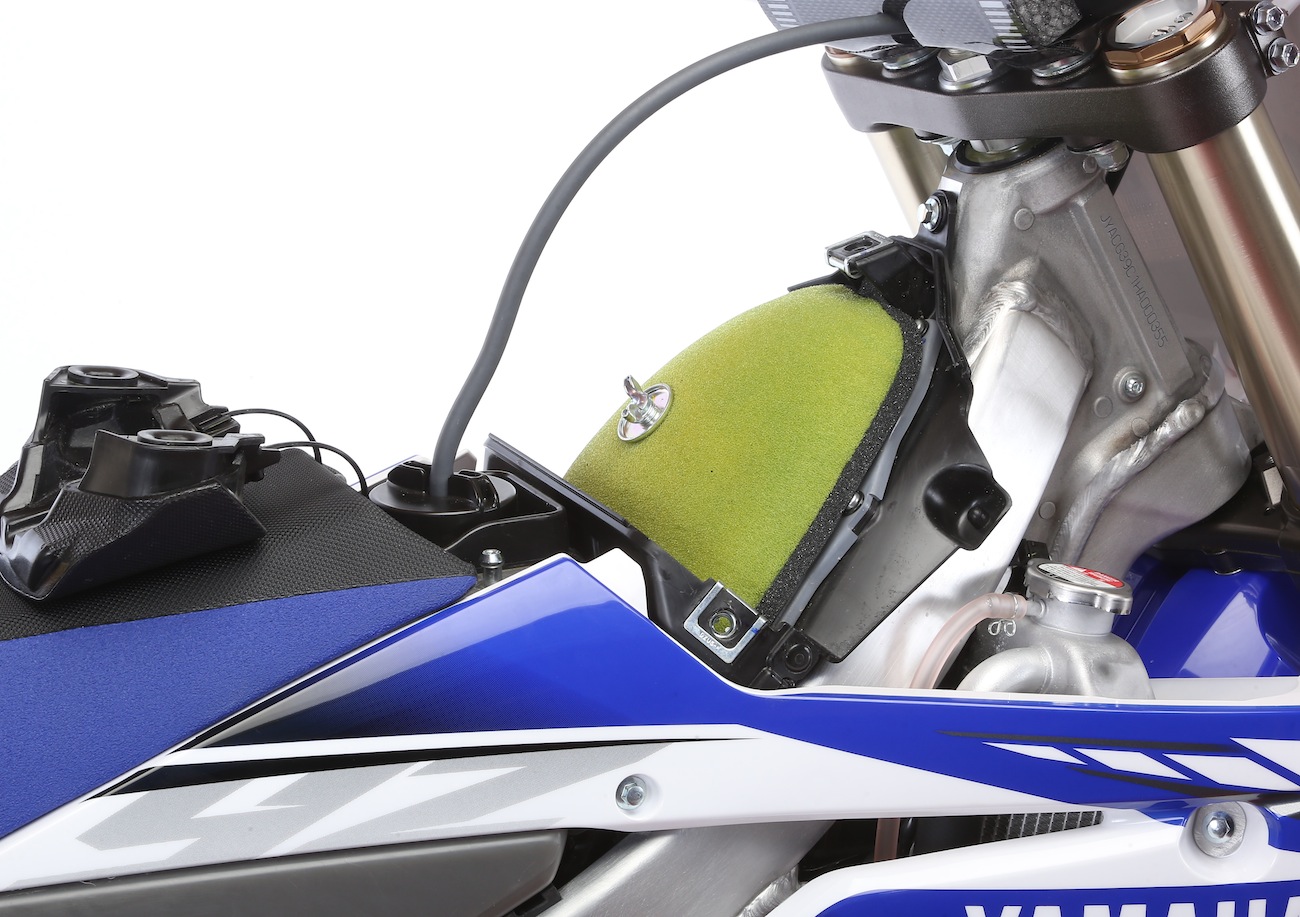 The airbox is a plumber’s nightmare. You have to fiddle with the seat, radiator wings and Dzus fasteners to get to it.
The airbox is a plumber’s nightmare. You have to fiddle with the seat, radiator wings and Dzus fasteners to get to it.
Q: WHAT IS THE SIMPLEST WAY TO EXPLAIN HOW THE 2017 YAMAHA RUNS?
A: It runs like a 2016 Kawasaki KX250F. That’s not an insult. The MXA wrecking crew has always loved the KX250F’s instant-on, full-blast powerband. For 2017 Kawasaki abandoned its barky instant-on powerband in favor of a more linear style of power. No sweat. Yamaha picked up what Kawasaki discarded. The YZ250F’s midrange power is plentiful, with a sizable amount of hit and a noisy delivery that tells you where the meat is. The new YZ250F engine comes on hard and fills the gaps. As for the top-end power they were aiming for, it’s there, but it is overshadowed by the torquey midrange and seems to turn over very quickly.
Q: HOW MUCH DOES THE 2017 YZ250F WEIGH?
A: At 222 pounds, the Yamaha is one pound heavier than last year. Even so, the Japanese brands always seem to be a tick behind KTM these days—actually, about five ticks (if ticks are pounds).
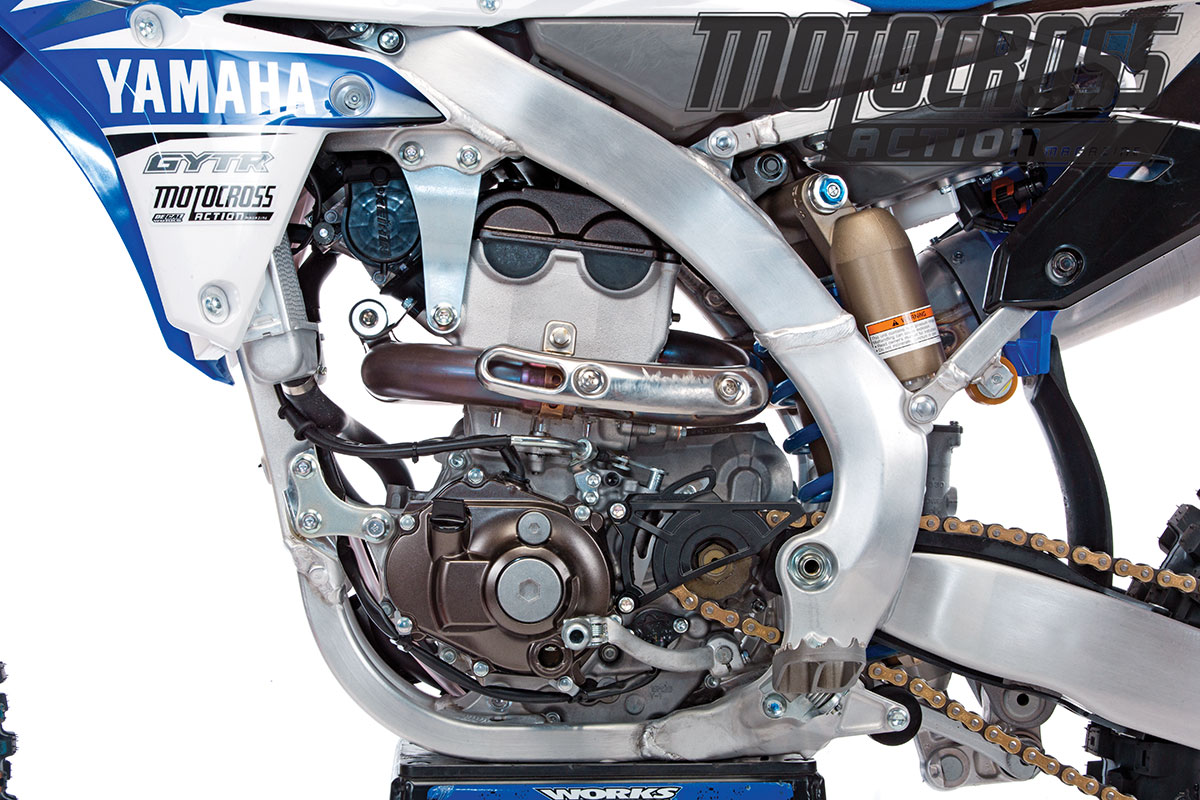
Q: WHAT DO WE HATE?
A: The hate list:
(1) Air filter. We hate the Dzus fasteners, recessed or not. They are an inelegant solution to a problem that could be solved with less hardware, less plastic and less bulk. Look no further than the TM 250FI-MX test on page 94 to see a simpler solution.
(2) Exhaust pipe. Harvard should hand every applicant a 10mm wrench, and only the candidates who can get a YZ250F pipe off in under 15 minutes should get into the Ivy League.
(3) Boom box. The noise that comes out of the front-mounted airbox is very similar to what you hear from the lowrider parked next to you at a stoplight.
(4) Muffler. Even though the part numbers are the same, the YZ250F makes a lot of exhaust noise, mostly attributable to the cylinder head mods.
(5) Gearing. Faster test riders experimented with a one-tooth-taller (49-tooth) sprocket; it allowed them to carry more speed from turn to turn.
(6) Gas cap. Don’t put it on too tightly, because it sticks—and the little winglet on top doesn’t offer much leverage.
(7) Front brake. To keep up with KTM, Yamaha went to a 270mm rotor; however, it doesn’t seem that Yamaha spent a lot of time fiddling with master-cylinder piston sizes to work with the jumbo rotor. The YZ250F brake was very grabby.
Q: WHAT DO WE LIKE?
A: The like list:
(1) Suspension. Just say no to Schrader valves (unless they are on your tires). Kayaba’s coil-spring-equipped SSS units are easy ti live with and blessed with a reputation unequalled in the sport.
(2) Mapping. Mapping a Honda, Kawasaki, Suzuki or KTM requires you to have Bill Gates’ phone number on speed dial. Not so with Yamaha’s GYTR Power Tuner. The Power Tuner comes in handy after installing an aftermarket pipe, porting the head or running race fuel.
(3) Tires. Not every motorcycle has to come with Dunlop MX3S tires, so we appreciate that the YZ250F is shod with Bridgestones. We like the 403/404 sneaker combo, but would have liked a more modern pairing of a Bridgestone X30 front with a X40 rear.
(4) Clutch. It’s not as good as the hydraulic clutches on the KTM and Husky, but it’s better than what’s on the Suzuki, Honda and Kawasaki. We had issues with it releasing very far out on the lever.
(5) Power. When we saw the spec sheet, we were worried that Yamaha was trying to be the second cousin to the high-rpm KTM 250SXF. Luckily, the YZ250F mods produced a better powerband than even Yamaha’s engineers expected.
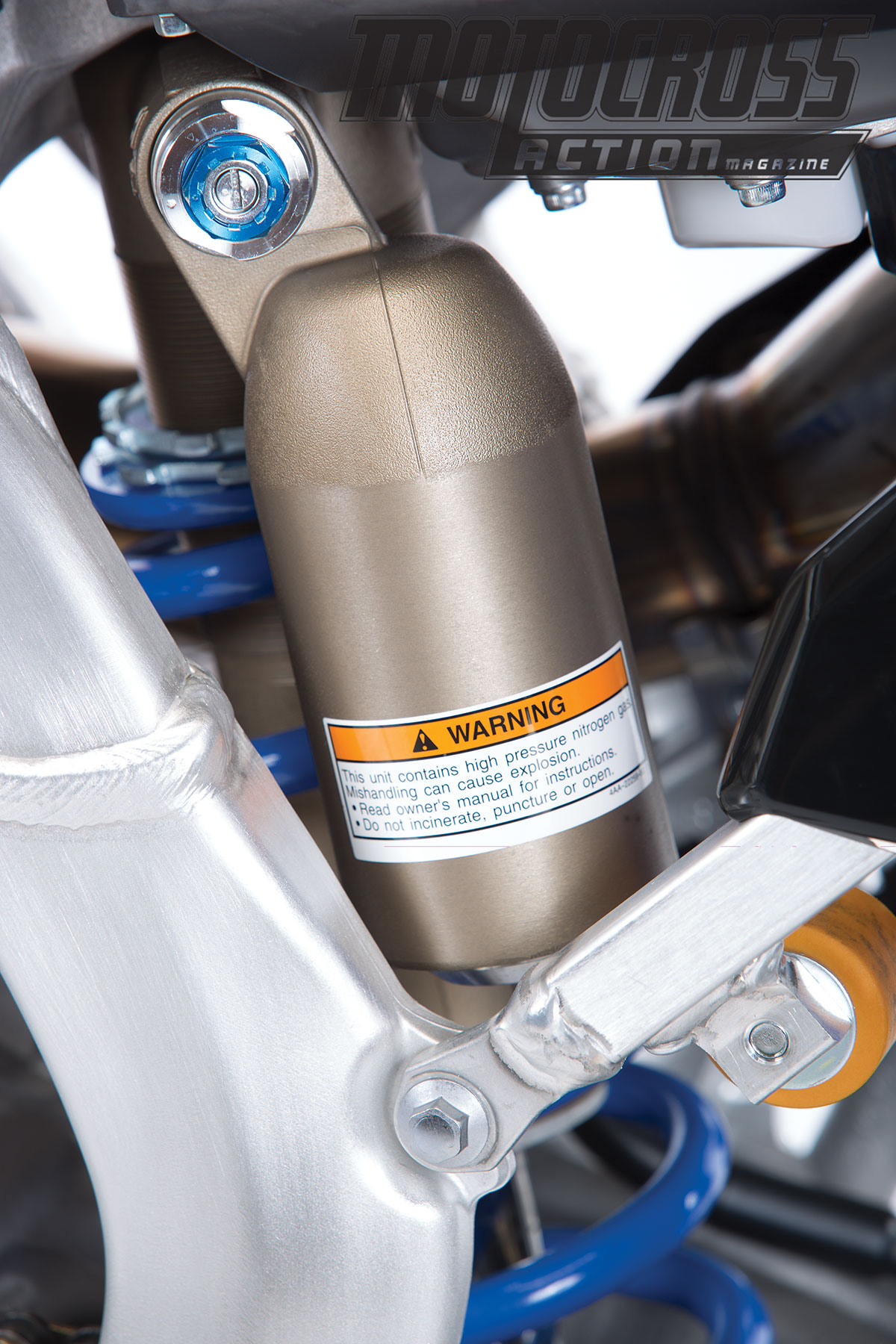
Q: WHAT DO WE REALLY THINK?
A: The YZ250F has lots of superlatives, most notably the solid SSS suspension and supremely usable powerband. But, there isn’t a bike in the 250 class that knocks the ball out of the park in every category. There is always a different color bike that does something better. The Suzuki RM-Z250 turns sharper than a YZ250F. The KTM 250SXF has a horsepower rating that is in another galaxy compared to the YZ250F. The Husqvarna (and its KTM brother) are so light that they almost float in comparison to the YZ250F. The Honda CRF250 has cachet that comes with red plastic compared to the Yamaha’s blue. And, the Kawasaki is the sleeper of the group—linearly smooth with a much-improved overall package.
But, the 2017 Yamaha YZ250F is very good where it’s good and pretty good where it isn’t. It’s a bike without the glaring flaws that always bring a dream machine back to earth. It’s strange to say, but the 2017 Yamaha YZ250F is good because it’s not great, and it’s great because there is no aspect where it’s not good. Got that?
MXA’S YAMAHA YZ250F SETUP SPECS
This is how we set up our 2017 Yamaha YZ250F for the track. We offer these settings to help steer you in the right direction.
KAYABA SSS FORK SETTINGS
These are awesome forks. They are relatively unchanged from the past—but that’s not a crime in SSS-land. If you are under 150 pounds, consider dropping the fork springs to the optional 4.5 N/m rate. You can also lower the oil height in 5cc increments until the desired performance is met. Most MXA test riders felt that the fork springs were sufficient for a wide range of rider weights and speeds. For hardcore racing we recommend this fork setup for the 2017 Yamaha YZ250F (stock specs are in parentheses):
Spring rate: 4.6 N/m
Compression: 14 clicks out (11 clicks out)
Rebound: 10 clicks out (12 clicks out)
Fork-leg height: 5mm up
Notes: Don’t be afraid to make very large swings in compression and rebound clicker settings. We tested everything from 10 clicks out to 20 clicks out. These big alterations help you zero in on the perfect numbers for your style. As a rule of thumb, we ran less compression damping than stock and more rebound.
KAYABA SSS SHOCK SETTINGS
This was a good shock—not just for lightweights, but for beefier riders also. We don’t know how Yamaha gets its suspension components to work for Novices, Intermediates and Experts at the same time. For hardcore racing we recommend this shock setup for the 2017 Yamaha YZ250F (stock specs are in parentheses):
Spring rate: 54 N/m
Race sag: 102mm
Hi-compression: 1-1/2 turns out (1-1/8 turns out)
Lo-compression: 15 clicks out (11 clicks out)
Rebound: 10 clicks out (14 clicks out)
Notes: The shock has a tendency to hop under heavy braking and down rough straights. We sped up the high-speed compression and softened up the low-speed compression.


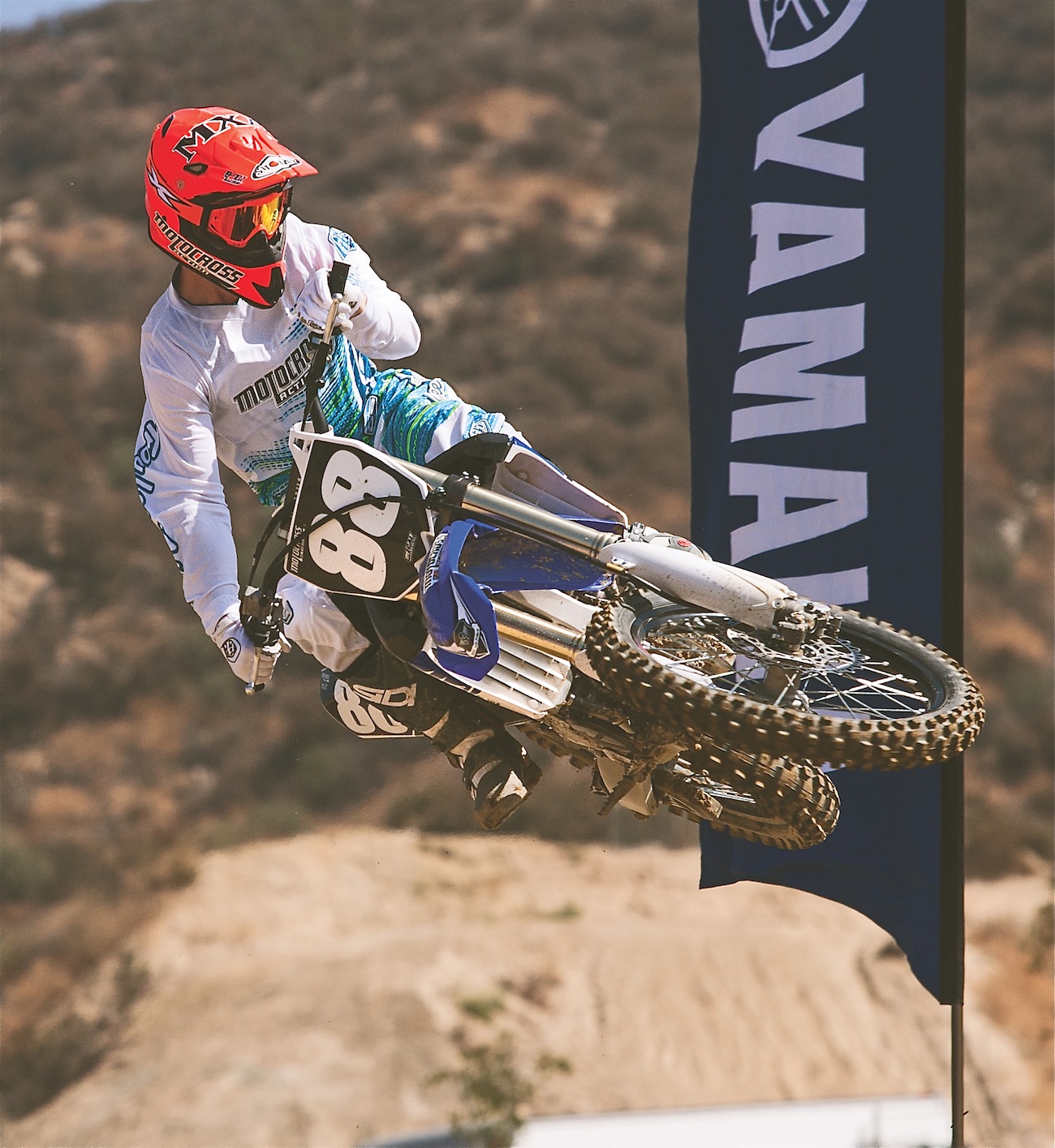
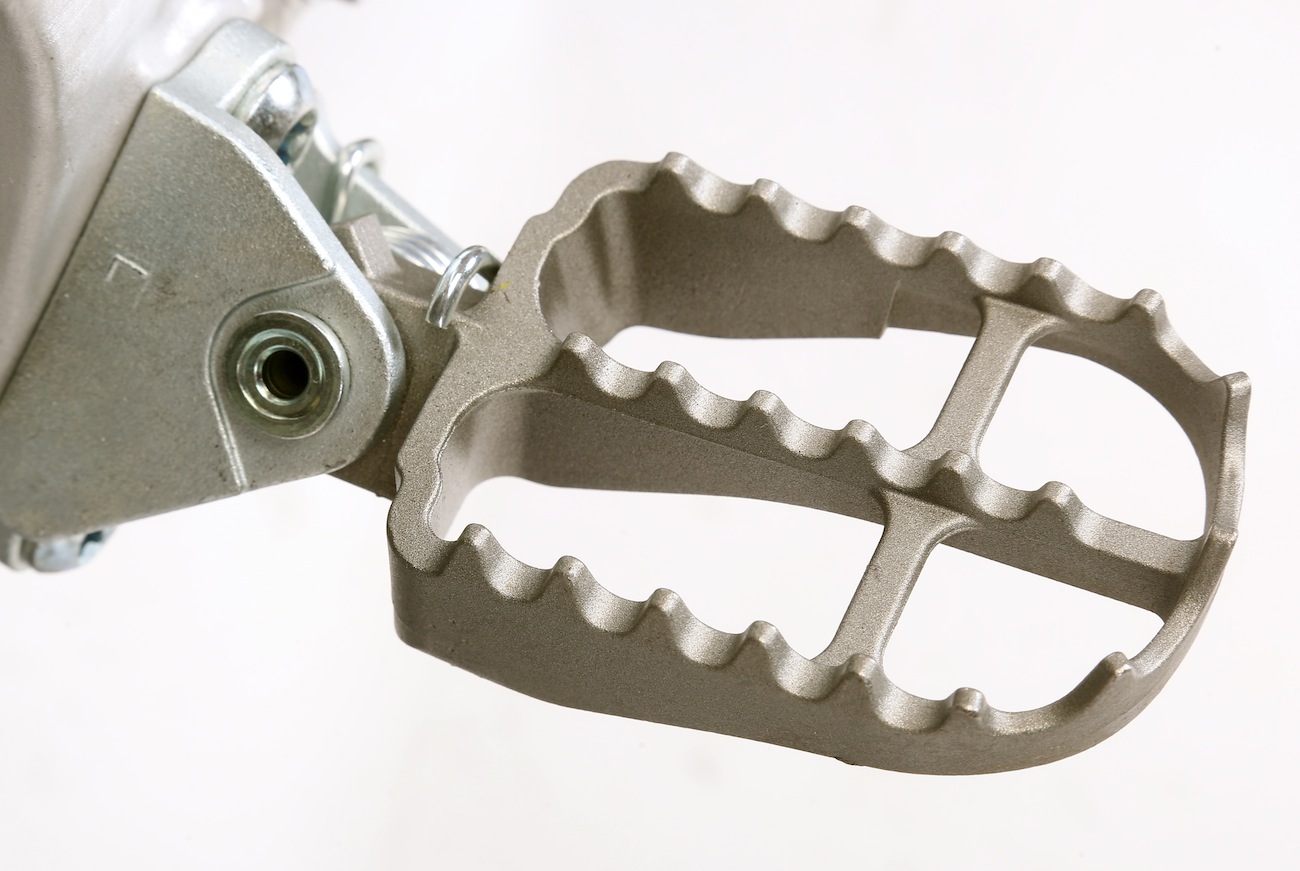

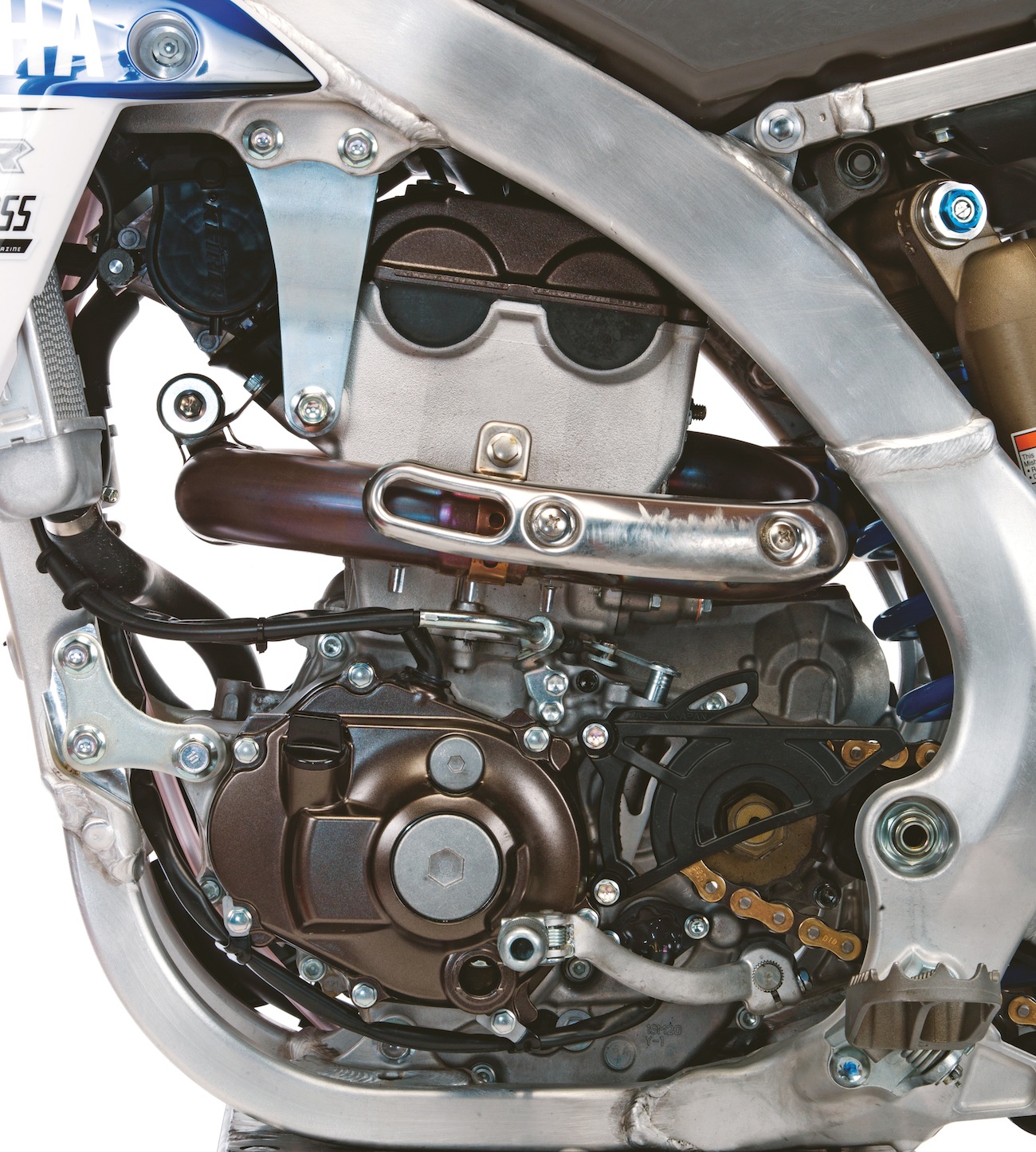

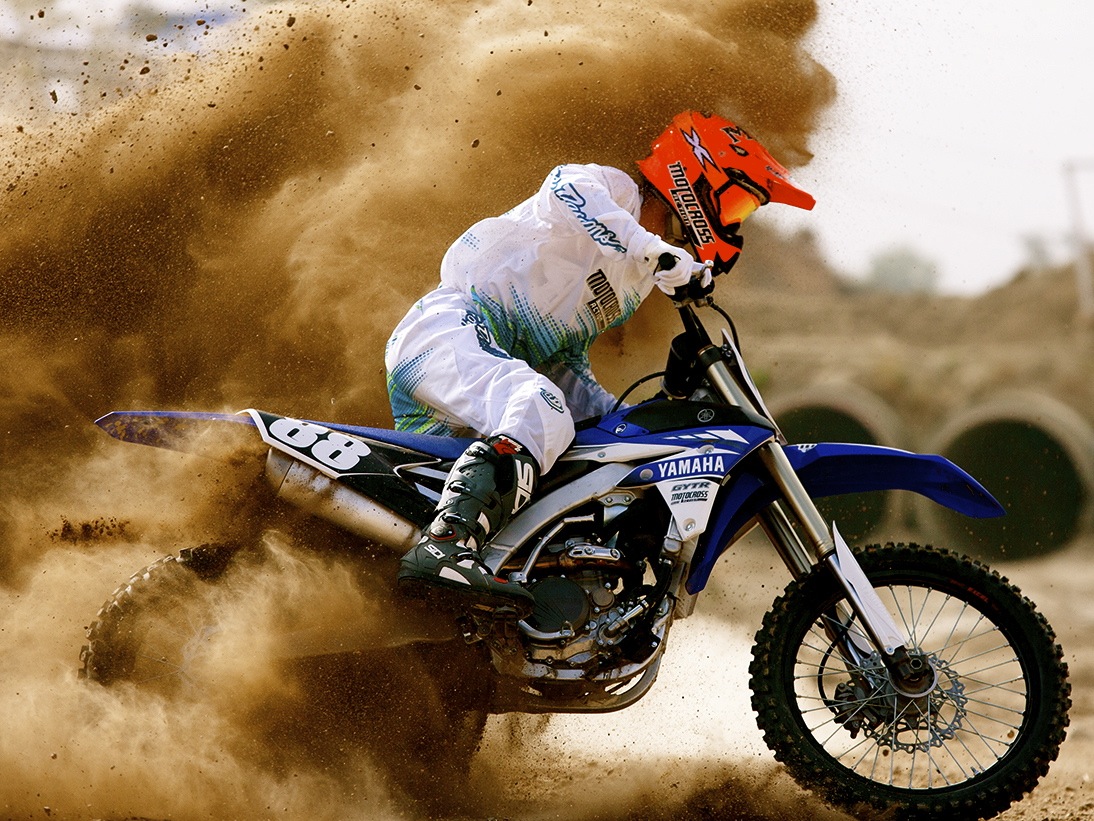




Comments are closed.